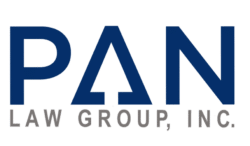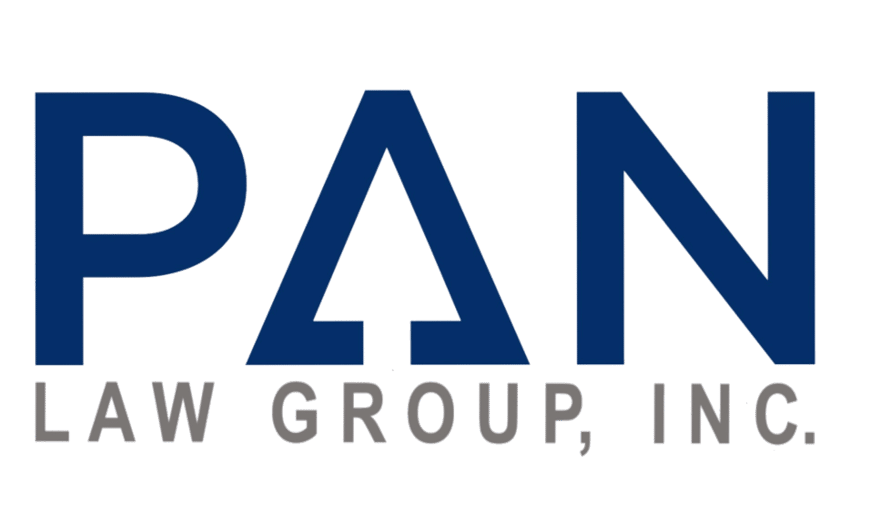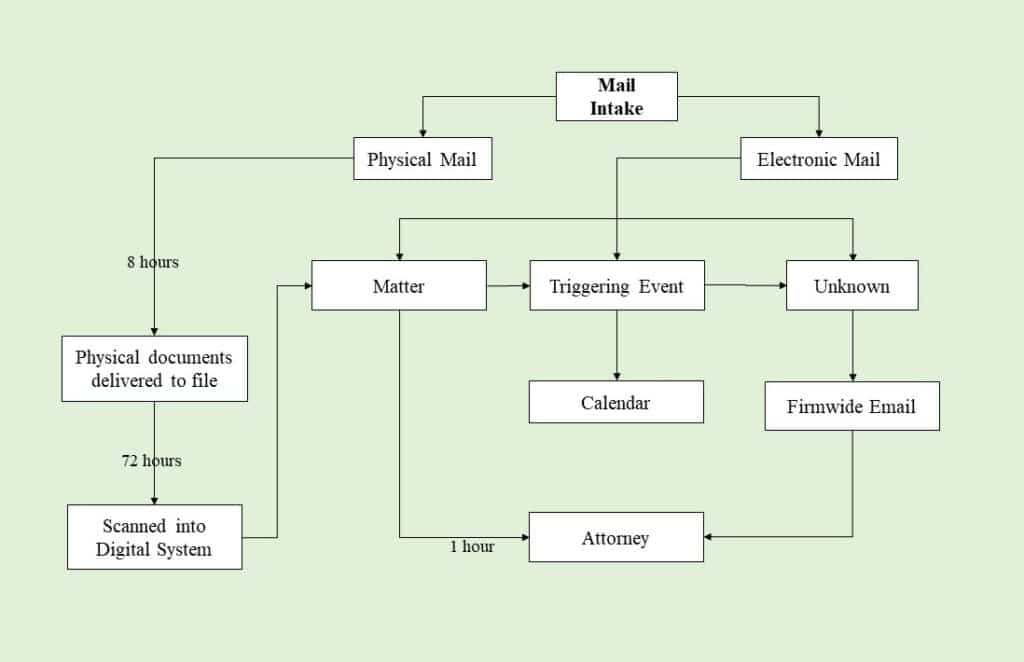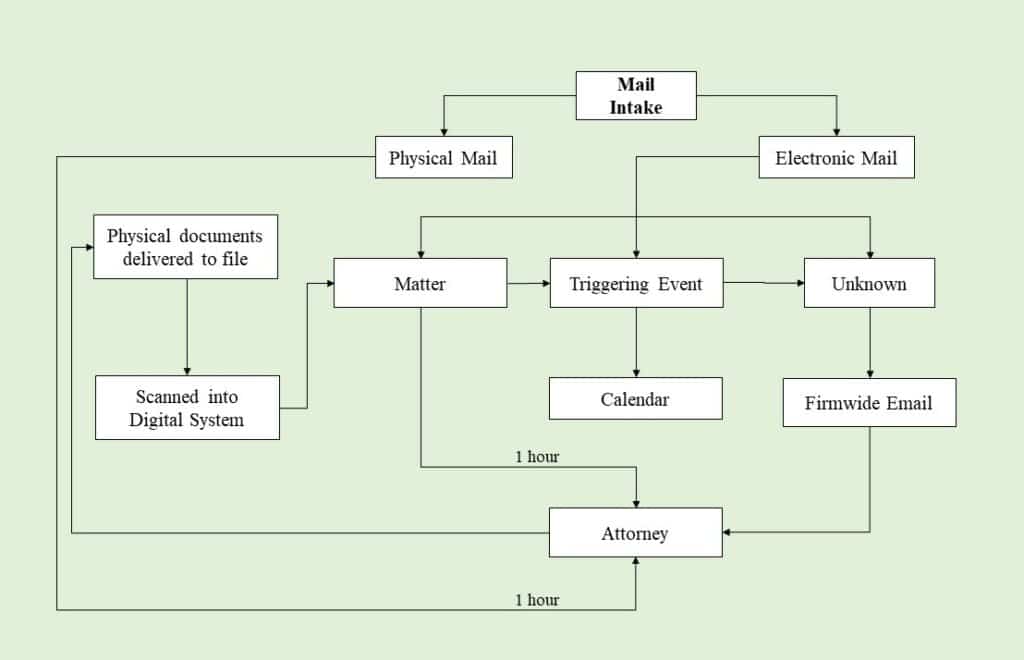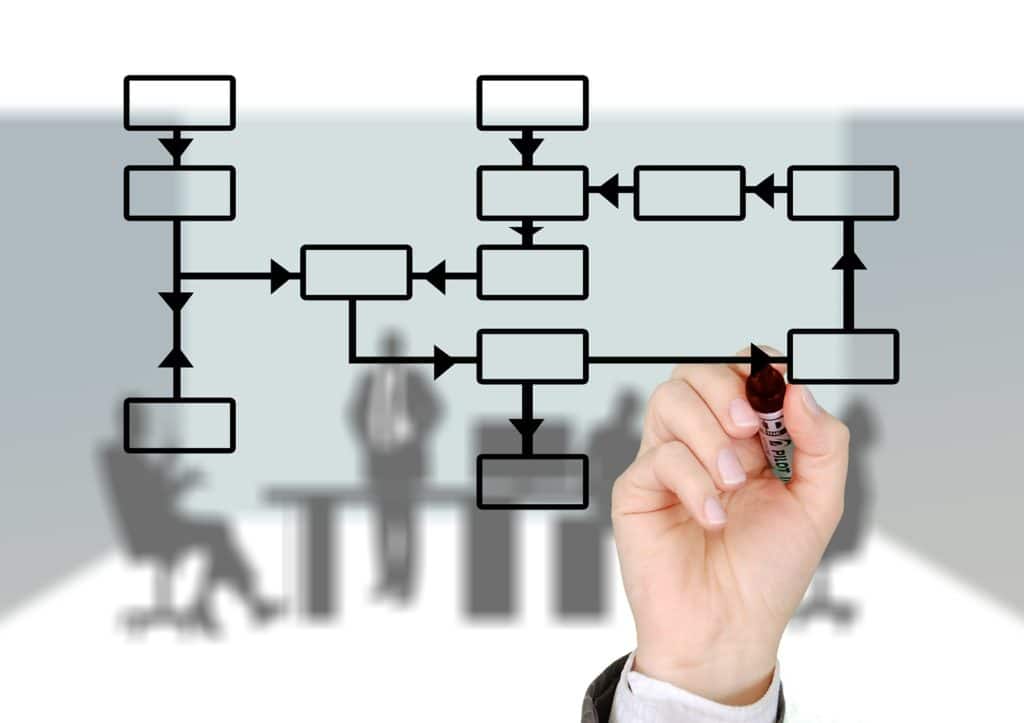
One of the classes commonly taught in business school is operations management. The tools used to increase operations efficiency apply to any business regardless of what it does. Operations are particularly important in the law firm setting. Even though attorneys are in the business of providing legal services, a large portion of time and costs are devoted to operations, i.e., making sure the logistics of the law firm are working smoothly and efficiently. Thus, the more efficient you can make your operations the more time you will have to devote to the substantive practice of law. The larger the law firm, the more important it is to streamline one’s operations. For example, receiving mail in a timely fashion is extremely important for law firms. Timely service of documents is defined by statutes and can be the source of contention or even litigation. For the solo practitioner, this is a non-issue. The mail goes directly from the mail box to the attorney. However, for larger firms, any time lag between actual receipt by the attorney could mean valuable time lost to write an opposition, perform a counter-action or in the worst case scenario a missed deadline. The most intuitive and simplest method of maximizing the efficiency of your law firm’s operations is to create an operations flow chart. Here’s how:
1 — Start With The Big Picture
The idea here is to start with an overhead, general view of your operations to discover potential issues. Start by identifying the major phases of your operations, for example, for my personal injury practice, I split up the life cycle of each case matter into four (4) parts: (1) Intake, (2) Discovery, (3) Trial and (4) Resolution.
Next, create a process flow chart for each phase of your operations. The point of this exercise is to identify each major event or process that occurs that moves the litigation of a matter forward. Rather than creating processes and pathways that you envision happening, try to draw only those that you know are actually occurring. The more honest you can be about your operations, the easier it will be to discover any potential issues.
2 — Identify Weak Spots
If you identified a particular process that is necessary within the operational flow of a phase but presently does not occur within your actual operations, then that is a problem that should be fixed. This means you are missing a major event or process that should happen within your business operations in order to move the litigation forward towards resolution.
If you are unable to draw an arrow between any two particular processes, then that is also an issue to be fixed. This means you have the necessary processes in place but there is a disconnect for the workflow getting to the proper destination.
Being able to look at the overall flow of your business operations is quite insightful. For example, in above flow chart I can see that there are two potential pathways from the Discovery phase straight to the Resolution phase–once at the pre-litigation demand time and another after filing a lawsuit around the time experts are retained. As well, the pathway towards mediation intersects the Trial flow chart, signifying the ability to settle the case even at trial. There should be a clear pathway between each phase of your operations. In the context of a personal injury law firm, the more pathways to resolution the better.
3 — Identify Bottlenecks
Now that we have our necessary processes in place it is helpful to identify bottlenecks in the operations in terms of timing. Law firms are different in that the timing of certain events and processes is governed by statutes, for example, the first available time you can propound written discovery. Setting those aside, think about the timing of each process in your operations and whether there is any unnecessary lag. For example, I have had experiences where an attorney doesn’t receive mail on time, a client had not signed a retainer, medical records were not ordered, an expert was not hired in time, etc. Whenever something was not done on time is an area that must be fixed, particularly in the law firm context.
It might help by assigning a number value to each arrow, signifying the time (hours, days, months, etc.) it takes to get from one process to another. Wherever you see an unacceptably high number will be an area for improvement.
Other bottlenecks may be seen as circular flows. If you see a circular flow in your operations, there is potentially work that does not have a pathway out.
4 — Create a Specific Flow Map for the Issue
Once you have identified the process you want to fix, create a more detailed flowchart for that process. For example, assume an attorney is not receiving mail in a timely fashion. A detailed flow chart for the Mail Intake process should be created, this is one process within the Intake phase of the law firm’s operations.
The above flow chart shows that when electronic mail (In contrast to one’s personal work email, this refers to things like electronic service emails sent to a general account or paralegal) is received, a determination is made as to the relevant matter. The electronic mail is then forwarded to the relevant attorney for that matter within one (1) hour. As well, if the substance of that mail triggers an event, for example, a deposition notice or motion, the relevant dates are calendared. Any unknown mail is sent via firm wide email to be claimed by the responsible attorney.
When physical mail is received, it is sent to be physically filed within the business day. However, it takes three (3) days for the physical documents to be scanned and uploaded into the digital system before being able to flow out into the matter, triggering event or unknown processes and ultimately dispersed to the attorney.
5 — Fix The Problem!
There might be any number of reasons why the issue exists. Before implementing a solution, it is helpful to first understand why the issue is occurring once you have identified what it is. For example, when documents are produced in litigation often times it is hundreds if not thousands of pages. These types of physical mailings would create a roadblock in the operational flow as it would take time for them to get scanned and uploaded. As well, non-document productions like radiology films are hundreds of megabytes if not gigabytes large, these would also create a slow-down when being uploaded into the digital system.
If you wanted to fix the issue directly, you could perhaps hire more staff and computers to get that seventy-two (72) hour number down. However, an efficient and free solution is to simply change the operational flow. The modified flow chart above now has all physical mail sent straight to the attorney within one (1) hour of receipt. This way any time-sensitive material will be immediately available for the attorney to review, for example, ex parte applications. The attorney can then put the physical mail in his outbox to be later delivered to the physical file and uploaded into the digital system. Now the attorney will never receive a physical piece of mail late, and all mail will still be physically filed and uploaded into the digital system.
The mail hypothetical above is just one very basic example where creating an operational flow chart could greatly benefit your business. You can get as detailed as you want, down to creating a decision making process tree. If you think your business is already running at 100% operational efficiency, creating a process flowchart may still give you valuable insights on how to make things better. For example, in my law firm I want as many pathways straight to the resolution phase as possible because a settlement means guaranteed money for my client. Looking at the overall operations I have two potential pathways towards resolution, perhaps a third pathway could be created after the lawsuit is filed and further investigation is conducted.
DISCLAIMER: The content above is entirely the opinion of Pan Law Group, Inc. and should in no way be considered legal advice. Please contact us for a free legal consultation if you have any questions. Thank you.
